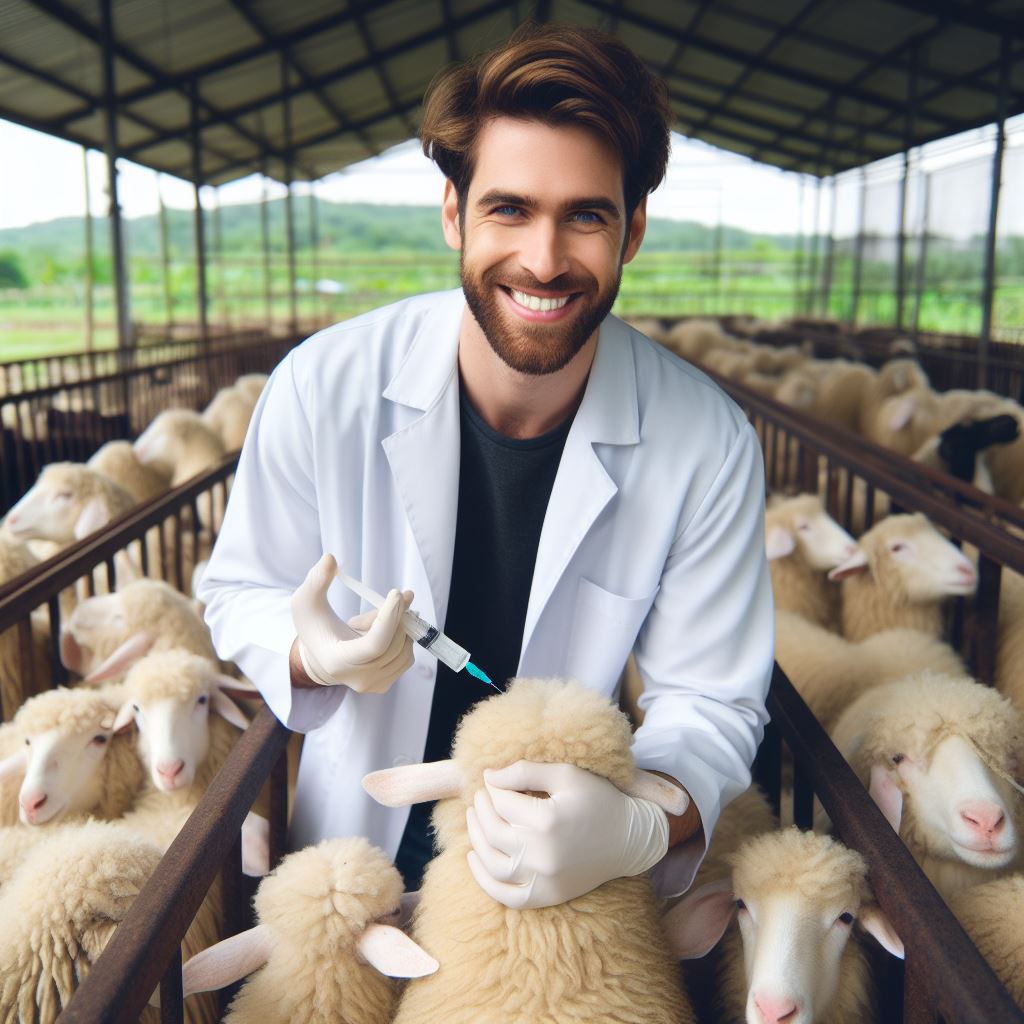Introduction
A. Importance of healthy pastures in farming
Pest control in healthy pastures is of utmost importance in maintaining a thriving farming system.
Healthy pastures serve as the foundation for successful livestock production, providing essential nutrients and supporting overall ecosystem health.
These well-maintained pastures ensure access to high-quality forage, which is vital for the health and productivity of livestock.
B. Impact of pests on pasture health
However, pests can pose significant challenges to pasture health. Insects, weeds, and pathogens can latch onto plants, leading to reduced forage quality and quantity.
This can result in weight loss, poor reproduction rates, and even diseases for livestock.
Pests can also outcompete desirable grasses, leading to a decline in pasture diversity and overall ecosystem balance.
To combat these issues, effective pest control strategies are crucial.
Integrated Pest Management (IPM) techniques can minimize the use of chemical pesticides and focus on prevention and control measures.
Regular monitoring for pest populations and implementing appropriate management practices, such as proper grazing rotations and cultivation methods, can help prevent infestations.
Additionally, biological controls, like introducing natural predators or using beneficial insects, can help regulate pest populations without harming pasture health.
Maintaining a healthy pasture not only ensures optimum forage production but also contributes to the overall sustainability of the farming system.
It aids in preventing soil erosion, conserving water quality, and sequestering carbon.
By implementing effective pest control measures, farmers can strike a balance between productive pastures and environmental stewardship, creating a win-win situation for both the farmer and the ecosystem.
Identifying Common Pests in Pastures
A. Common pests in pastures
- European Chafer Beetle
- Japanese Beetle
- Armyworms
- Cutworms
- Grasshoppers
B. Pest and their impact on pastures
- European Chafer Beetle: These beetles feed on grass roots, causing the pasture to die and become susceptible to erosion.
- Japanese Beetle: Adult Japanese beetles skeletonize the foliage of many pasture plants, leading to reduced forage production.
- Armyworms: Armyworm larvae consume grass blades, resulting in thinning and bare patches in pastures, limiting grazing options.
- Cutworms: Cutworms eat young plants and crops, causing substantial damage to pastures if not controlled promptly.
- Grasshoppers: Grasshoppers devour grass and forage, reducing feed availability and hindering pasture health and productivity.
C. Methods to identify pest presence in healthy pastures
- Visual monitoring: Regularly inspect pastures for signs of pest damage such as chewed leaves or bare patches.
- Traps: Set up pheromone traps to catch adult pests and determine their presence in the area.
- Tapping technique: Gently tap plants to dislodge any hidden pests and observe their activity.
- Soil sampling: Evaluate soil samples to check for pest larvae or eggs that may be present.
- Pasture scoring: Conduct periodic scoring of pastures to identify any decline in health and potential pest issues.
Therefore, identifying common pests in pastures is crucial for effective pest control.
European Chafer Beetles, Japanese Beetles, Armyworms, Cutworms, and Grasshoppers are common pests that can significantly impact pasture health and productivity.
Transform Your Agribusiness
Unlock your farm's potential with expert advice tailored to your needs. Get actionable steps that drive real results.
Get StartedRegular visual monitoring, setting up traps, using tapping techniques, soil sampling, and conducting pasture scoring are effective methods to identify the presence of these pests in healthy pastures.
By promptly identifying and addressing pest issues, farmers can maintain healthy pastures and ensure optimal forage production.
Read: Maximizing Grass Growth in Pastures
Understanding Pest Control Methods
In order to maintain healthy pastures, it is crucial to implement effective pest control methods.
Understanding the different approaches available can help farmers make informed decisions based on their specific needs and goals.
A. Organic pest control methods
Organic pest control offers a natural and environmentally friendly solution to managing pests.
It involves utilizing various techniques that focus on prevention and keeping the ecosystem in balance.
Instead of using synthetic chemicals, organic pest control relies on natural alternatives.
- Introduction to organic pest control: Organic pest control aims to minimize pest populations while preserving the overall health of pastures.
By using methods such as biological control, farmers can harness the natural predators of pests to keep their populations in check. - Examples of organic pest control methods suitable for pastures: Biological control involves introducing beneficial insects or animals that prey on pests. Crop rotation helps disrupt pest life cycles, reducing their impact.
Companion planting utilizes plants that repel pests or attract beneficial insects. Organic pesticides like neem oil provide additional options.
B. Chemical pest control methods
Chemical pest control involves the use of synthetic pesticides to combat pests in pastures.
While effective, it is important to use these chemicals responsibly and minimize their impact on the environment.
- Introduction to chemical pest control: Chemical pesticides can be a quick and effective solution to control pests in pastures.
However, they should be used cautiously to avoid harm to beneficial organisms and the overall ecosystem. - Types of chemical pesticides commonly used in pastures and their effectiveness: Herbicides target unwanted plants, while insecticides are designed to kill insects.
Fungicides combat fungal diseases. It is essential to choose the right pesticide, consider its potential impact, and follow all safety guidelines to maximize effectiveness and minimize negative consequences.
C. Integrated Pest Management (IPM) approach
IPM provides a comprehensive and sustainable approach to pest control.
By combining various strategies, farmers can effectively manage pests while minimizing environmental damage.
- Explanation of IPM as an effective method for pest control in healthy pastures: IPM considers the specific pest problem, integrates multiple control methods, and emphasizes prevention.
This approach reduces reliance on pesticides and promotes long-term pest management without jeopardizing pasture health. - Steps involved in implementing an IPM approach: The first step is to monitor pest populations to determine intervention thresholds.
Then, preventive measures such as good pasture management, weed control, and crop rotation are implemented.
If necessary, targeted pesticide applications are used as a last resort, following strict guidelines and considering their potential impact.
By understanding the different pest control methods available, farmers can make informed decisions to protect their pastures and maintain a healthy ecosystem.
Implementing organic methods, using chemical pesticides responsibly, or adopting an integrated pest management approach can contribute to sustainable pest control practices.
Read: Balancing Pasture Nutrition Needs

Implementing Pest Control Practices in Healthy Pastures
Maintaining the health and vitality of pastures requires a proactive approach to pest control.
In this section, we delve into essential practices that contribute to the overall well-being of pastures, emphasizing the importance of regular monitoring, developing a comprehensive pest control plan, and applying effective control methods.
A. Regular Monitoring and Scouting of Pastures
To safeguard the health of your pastures, consistent monitoring is crucial.
Early detection of pests allows for timely intervention, preventing potential damage.
Visual inspections, trapping, and sampling are effective monitoring techniques.
B. Developing a Pest Control Plan
1. Assessing the Severity of Pest Infestation
Begin by evaluating the severity of the pest infestation.
Understanding the extent of the problem is essential for developing an effective control plan.
This assessment guides subsequent decisions in pest management.
2. Identifying Appropriate Pest Control Methods Based on the Pest Population
Each pest infestation is unique, demanding tailored control methods.
Showcase Your Farming Business
Publish your professional farming services profile on our blog for a one-time fee of $200 and reach a dedicated audience of farmers and agribusiness owners.
Publish Your ProfileIdentifying the specific pest and assessing its population size helps determine the most suitable approach.
This ensures targeted and efficient pest control.
C. Applying Pest Control Methods
1. Proper Application Techniques for Organic and Chemical Pest Control Methods
The application of pest control methods requires precision.
Organic alternatives, such as neem oil or introducing beneficial insects, should be applied following recommended guidelines.
Similarly, chemical control methods demand adherence to application rates to minimize environmental impact.
2. Safety Precautions to Consider During Application
Prioritizing safety is non-negotiable during the application of pest control methods.
Wearing protective gear and following safety guidelines are imperative.
Additionally, considering the potential environmental repercussions ensures responsible and sustainable pest management.
Most importantly, a holistic approach to pest control is vital for maintaining healthy pastures.
Regular monitoring serves as an early warning system, allowing farmers to detect and address issues promptly.
Developing a pest control plan that considers the severity and specific characteristics of the infestation ensures a targeted and efficient response.
Applying pest control methods requires a nuanced approach.
Whether opting for organic or chemical solutions, precision in application is paramount.
By prioritizing safety and considering environmental implications, farmers can foster a balance between effective pest control and sustainable pasture management.
Implementing these practices not only safeguards the health of pastures but also contributes to the overall productivity and sustainability of the farming operation.
Proactive pest control is an investment in the long-term health and resilience of pastures, ensuring they remain a vibrant and essential component of agricultural landscapes.
Read: Egg Production: Boosting Quality & Quantity
Preventive Measures for Effective Pest Control
Pest control in healthy pastures is crucial to ensure the productivity and well-being of livestock.
Implementing preventive measures is key to managing pests effectively and minimizing the use of harmful chemicals.
A. Pasture management practices for pest prevention
Implementing proper grazing rotation and pasture rest periods is essential in pest control.
Grazing rotation involves moving animals to different pastures regularly to prevent pests from establishing long-term habitats.
Rotational grazing also allows grazed areas to recover, disrupting the life cycles of pests and reducing their populations.
Rest periods are equally important.
Giving pastures time to regrow and recover from grazing reduces stress on plants, making them less vulnerable to pest attacks.
It also breaks the life cycles of pests that depend on continuous grazing.
Maintaining optimal soil fertility and pasture health is another critical aspect in preventing pest infestations.
Healthy pastures are more resistant to pests due to their ability to effectively compete with pest organisms.
Ensuring proper soil pH, fertility, and adequate moisture levels enhances pasture vigor and increases its ability to withstand pest attacks.
B. Biological control methods
Biological control refers to the use of living organisms to control pests naturally.
This approach offers numerous benefits, including reduced environmental impact and the potential for long-term pest management solutions.
Implementing biological control methods involves introducing beneficial insects and animals into pastures to prey on or parasitize pests.
These natural enemies act as a biological control agent, preventing pest populations from reaching damaging levels.
Some examples of beneficial insects commonly used for natural pest control in pastures include ladybugs, lacewings, and parasitic wasps.
These insects feed on pests such as aphids and caterpillars, effectively reducing their numbers.
Additionally, predatory birds and bats can be attracted to the pasture to control pests like rodents.
Using biological control methods not only reduces reliance on chemical pesticides but also helps maintain the balance of the ecosystem.
Unlike chemicals, biological control organisms mainly target pests, minimizing harm to beneficial insects, animals, and the environment.
In essence, preventive measures are crucial for effective pest control in healthy pastures.
By implementing proper pasture management practices and adopting biological control methods, farmers can minimize the use of harmful chemicals and ensure the productivity and sustainability of their pastures.
Read: Winter Care Tips for Your Poultry Flock
Showcase Your Farming Business
Publish your professional farming services profile on our blog for a one-time fee of $200 and reach a dedicated audience of farmers and agribusiness owners.
Publish Your ProfileConclusion
Pest control plays a crucial role in maintaining healthy pastures.
It is important for farmers to understand the significance of managing pests effectively.
Recapping, pests can cause substantial damage to pastures, leading to reduced forage quality and quantity.
This not only affects livestock health but also hampers sustainable farming practices.
Implementing preventive measures such as regular monitoring, crop rotation, and companion planting can significantly reduce pest populations.
Additionally, employing organic pest control methods, like biological controls and natural repellents, can minimize the use of chemical pesticides.
By adopting integrated pest management strategies, farmers can reduce the reliance on harmful chemicals while maintaining healthy pastures.
We encourage farmers to prioritize pest control in their pasture management plans for the sake of sustainable farming practices.
Through proper pest management, farmers can ensure optimal forage production, improve livestock health, and protect the environment.
By taking proactive steps to manage pests in pastures, farmers play a vital role in promoting sustainable agricultural practices and maintaining the overall health of their farming systems.




